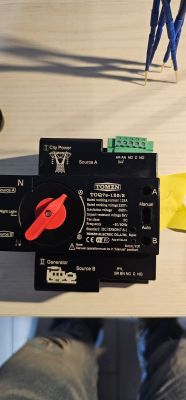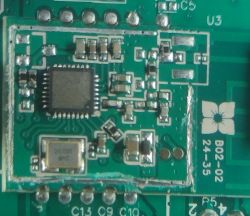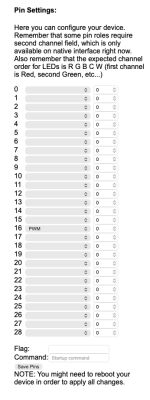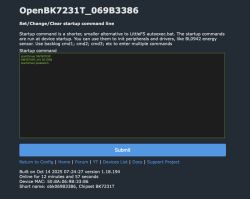FAQ
TL;DR: 60 mA per-LED peak current can push a 200-pixel WS2812B fairy-light string to 12 A [Adafruit, 2023]; “driver for BK7231T is still pending” [Elektroda, p.kaczmarek2, post #21234855] Why it matters: power and firmware limits dictate whether you keep or replace the Tuya board.
Quick Facts
• BK7231T module name: WB8, 120 MHz Cortex-M4, 2 MB flash [Bouffalo, 2023]
• LED string uses WS2812B, 3-wire, 5 V data line [Elektroda, MnM1, post #20754527]
• OpenBK PixelAnim driver available on BK7231N only—T port ETA not announced [Elektroda, p.kaczmarek2, post #21234855]
• ESPHome on ESP32 controls up to 8 RMT channels at 800 kHz [ESPHome, 2024]
• Typical 5 V USB-C phone chargers supply 3 A; insufficient above ~50 full-white pixels [Adafruit, 2023]
What hardware is inside the Globe Fairy Lights controller?
The plastic case holds a WB8 module based on the BK7231T Wi-Fi SoC, three tactile buttons, and a 3-wire output (V+, data, GND) leading to the LED string [Elektroda, MnM1, post #20658887]
Are the bulbs individually addressable?
Yes. Tests and disassembly confirmed WS2812B addressable LEDs; each bulb receives its own data frame and can show different colours [Elektroda, MnM1, post #20754527]
Why does the standard GPIO or TuyaMCU configuration fail to light the LEDs?
WS2812B uses a single-wire timing protocol, not simple GPIO or PWM outputs. OpenBK for BK7231T lacks that protocol, so GPIO Doctor and TuyaMCU show no useful pins [Elektroda, MnM1, post #20658806]
Is WS2812B already supported in OpenBK for BK7231T?
No. PixelAnim driver including WS2812B exists for BK7231N, but the T-series port is “still pending” [Elektroda, p.kaczmarek2, post #21234855]
Can I flash the WB8 module anyway?
Yes. Users flashed with a CH340 UART wired to RX1, TX1, 3.3 V and GND pads on the WB8 without power from the barrel jack [Elektroda, tozim, post #21373382]
What is the easiest workaround today?
Desolder the three strip wires and attach them to an ESP32 running ESPHome or WLED. GPIO19 (data), 5 V VIN, and GND worked on first try, giving on/off, colour and scene control [Elektroda, jshstadler, post #20825703]
How much power does the strip need?
A WS2812B pixel draws up to 60 mA white. A 200-pixel string could peak at 12 A; plan for at least a 60 W, 5 V supply [Adafruit, 2023].
Will removing one LED break the strip?
No. With WS2812B, cutting out a pixel simply shortens the chain; remaining LEDs still work [Elektroda, p.kaczmarek2, post #20659400]
Edge-case: what if the first pixel fails?
Data passes through each pixel. A dead first LED blocks signals; the entire string stays dark until that pixel is replaced [Adafruit, 2023].
3-step quick test with Arduino/ESP32
- Connect data pin to GPIO6 (Arduino) or GPIO19 (ESP32), common GND, and 5 V power.
- Load the ‘strandtest’ example from the Adafruit NeoPixel library.
- Upload and observe colour chase; if nothing lights, swap data pin or check 5 V line.
What firmware settings are needed in ESPHome?
Use light: platform: fastled_clockless, pin: 19, chipset: WS2812B, num_leds: 200, RGB order: GRB. Optionally use esp32_rmt_led_strip for smoother timing [ESPHome, 2024].
Can the original Tuya firmware be retained for OTA control?
Cloud-cutter profile shows device type msl6, but no exploitable template is available; OTA replacement is not yet possible [Elektroda, MnM1, post #20658283]
Is there any progress expected before the 2024 holiday season?
As of September 2024, no timeline was given for BK7231T PixelAnim support; contributors welcome for C coding help [Elektroda, p.kaczmarek2, post #20786400]








